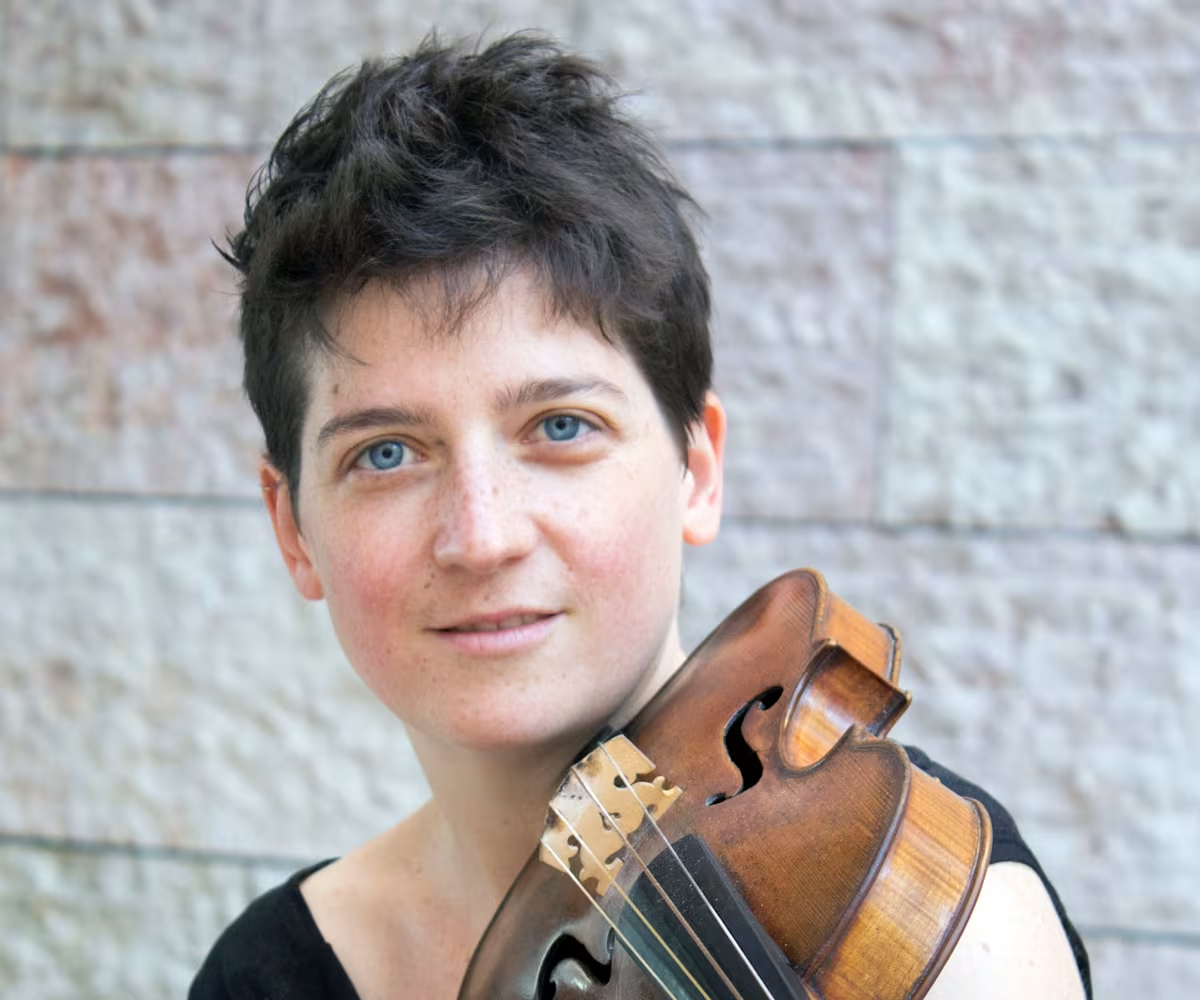Kinga Ujszászi
Mystery and Mastery

Johann Paul von Westhoff – Campanella
Biber – Annunciation – Mystery Sonata No.1
Biber – Sonata No. 6 (1681) in C minor
Johann Vilsmayr – Partita No. 5
Biber – The Assumption – Mystery Sonata No.13
Mystery and Mastery offers a glimpse into the dazzling and expressive world of 17th-century violin music—a period when the violin was emerging as a solo instrument of unprecedented virtuosity and emotional depth.
This era marked an exciting chapter in the violin’s history. Composers, performers, and instrument makers are constantly pushing the boundaries of what the violin could express and achieve. Much of the music from this time draws inspiration from the stylus phantasticus—a free, imaginative style known for its dramatic contrasts and inventive spirit, while slowly starting to move toward more structured forms.
At the heart of the program are two contrasting sets of sonatas by the deeply religious violinist Heinrich Ignaz Franz Biber. His devotion is evident in every note of the Mystery (or Rosary) Sonatas, even in his unprecedentedly daring use of scordatura (alternative tunings). Biber draws on religious symbolism and narrative to create a deeply immersive experience equally for performers and listeners. In contrast, Biber’s technically challenging sonata set from 1681, dazzle with virtuosic passages and intricate polyphony, exploring the limits of violin technique.
Alongside Biber, the concert introduces works by Johann Paul von Westhoff, a contemporary of Biber, and Johann Joseph Vilsmayr, Biber’s student. Both violinists are on the same path, exploring the violin’s expressive and technical possibilities, creating music that is both challenging and deeply moving.
As you listen you’ll hear the violin as a voice of devotion, storytelling, and brilliance. From the bell-like clarity of Westhoff’s Campanella, to the spiritual drama of Biber’s Annunciation and Assumption sonatas, and the lively dance movements of Vilsmayr’s Partita No. 5, each piece offers a window into a time when the violin was both a vehicle for personal expression and a symbol of mystery, mastery, and devotion.
 The Music Summer School and Festival
The Music Summer School and Festival Mon, 4 August 2025
Mon, 4 August 2025 Gresham's School, Holt, Norfolk
Gresham's School, Holt, Norfolk 9:30pm
9:30pm £14 (Under 18s - £10)
£14 (Under 18s - £10)
Full Event Details

Heinrich Biber – Sonata No 3. (1681) in F major
Johann Paul von Westhoff – Campanella
Biber – Annunciation – Mystery Sonata No.1
Biber – Sonata No. 6 (1681) in C minor
Johann Vilsmayr – Partita No. 5
Biber – The Assumption – Mystery Sonata No.13
Mystery and Mastery offers a glimpse into the dazzling and expressive world of 17th-century violin music—a period when the violin was emerging as a solo instrument of unprecedented virtuosity and emotional depth.
This era marked an exciting chapter in the violin’s history. Composers, performers, and instrument makers are constantly pushing the boundaries of what the violin could express and achieve. Much of the music from this time draws inspiration from the stylus phantasticus—a free, imaginative style known for its dramatic contrasts and inventive spirit, while slowly starting to move toward more structured forms.
At the heart of the program are two contrasting sets of sonatas by the deeply religious violinist Heinrich Ignaz Franz Biber. His devotion is evident in every note of the Mystery (or Rosary) Sonatas, even in his unprecedentedly daring use of scordatura (alternative tunings). Biber draws on religious symbolism and narrative to create a deeply immersive experience equally for performers and listeners. In contrast, Biber’s technically challenging sonata set from 1681, dazzle with virtuosic passages and intricate polyphony, exploring the limits of violin technique.
Alongside Biber, the concert introduces works by Johann Paul von Westhoff, a contemporary of Biber, and Johann Joseph Vilsmayr, Biber’s student. Both violinists are on the same path, exploring the violin’s expressive and technical possibilities, creating music that is both challenging and deeply moving.
As you listen you’ll hear the violin as a voice of devotion, storytelling, and brilliance. From the bell-like clarity of Westhoff’s Campanella, to the spiritual drama of Biber’s Annunciation and Assumption sonatas, and the lively dance movements of Vilsmayr’s Partita No. 5, each piece offers a window into a time when the violin was both a vehicle for personal expression and a symbol of mystery, mastery, and devotion.
Venue Details & Map

Location
Gresham's School, Holt, Norfolk
Gresham's School, Cromer Road, Holt, Norfolk, NR25 6EA

